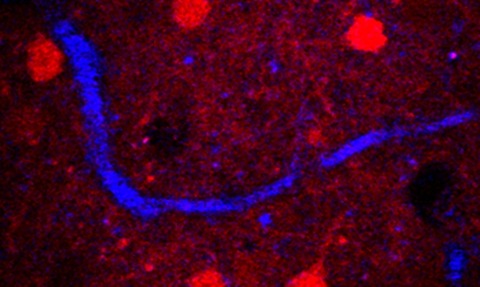Three-photon microscopy improves biological imaging
23 Jan 2013

Scientists may be a step closer to understanding the complexity of the brain and its billions of neurons.
Cornell researchers have demonstrated a new way of taking high-resolution, three-dimensional images of the brain’s inner workings through a three-fold improvement in the depth limits of multiphoton microscopy, a fluorescence-based imaging technique with Cornell roots.
Chris Xu, associate professor of applied and engineering physics, and colleagues have demonstrated high-resolution, 3D imaging of the subcortical region of a live, intact mouse brain.
Brain mapping could be the so-called grand challenge within the next decade
They have broken the fundamental depth limit of standard two-photon microscopy, which is a widely used imaging technology invented in 1990 by Watt Webb and Winfried Denk at Cornell.
Xu and Webb demonstrated three-photon fluorescence imaging while Xu was a graduate student in Webb’s lab in 1995, but its advantages were not fully recognised then, Xu said.
A new research paper describes three-photon fluorescence, combined with a longer excitation wavelength of the laser pulse, to overcome such obstacles as tissue scattering and absorption, which prohibit high-resolution imaging deep within biological tissues. It shows that three-photon microscopy is a much better technology in the context of deep tissue imaging, making multiphoton fluorescence microscopy truly “multiphoton.”
Using a mouse model, the researchers have proved the principle of three-photon microscopy operating at a wavelength of 1,700 nanometers. This, in combination with the new laser specifically created for three-photon excitation, allows the researchers to perform high-resolution imaging of neurons at unprecedented depths within a mouse brain.
“Brain mapping could be the so-called grand challenge within the next decade,” Xu said. “With MRI, we can see the whole brain but not with the resolution we have demonstrated. The optical resolution is about 100 to 1,000 times higher and allows us to clearly visualise individual neurons.”
In the mouse model, the researchers used dyes and transgenic mice to test their multiphoton microscope on different fluorescent signals and prove their concept. If three-photon microscopy can be used to map the entire mouse brain, it could ultimately help shed light on the functions of human brains.

